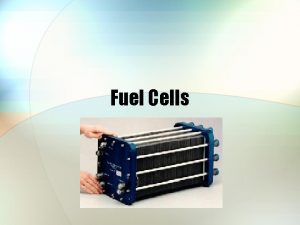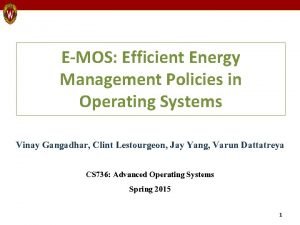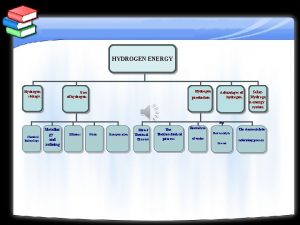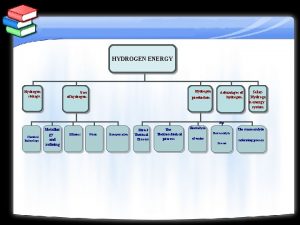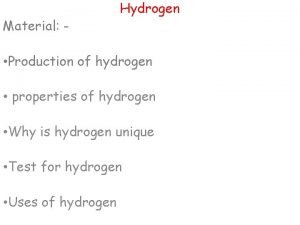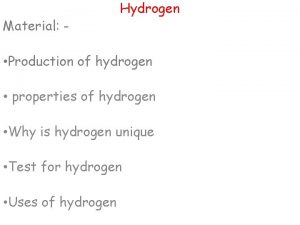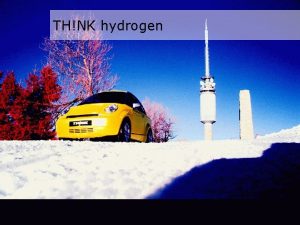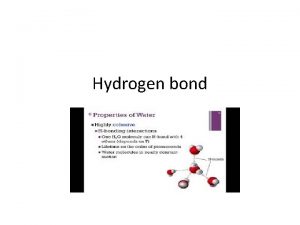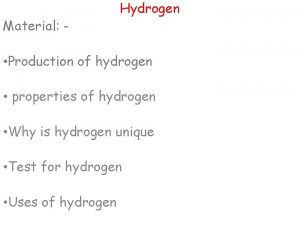Hydrogen Policy Design EUROP EANU KRAI NIAN ENERGY








- Slides: 8

Hydrogen Policy Design EUROP EAN-U KRAI NIAN ENERGY AGENCY (EUEA )

About EUEA • It is an independent non-profit organization open to all stakeholders in the Ukrainian Energy Efficiency (EE) and Renewable Energy (RE) sectors who want to work constructively with like-minded members to contribute to the gainful and transparent development of these markets in Ukraine, through the promotion of fair and sustainable business practice, raising of public awareness of energy issues, and by influencing government energy policy. • Almost 40 member companies and 3. 5 billion Euros investments in RES • The priority areas of EUEA's activity are RES and EE • Established in November 2009, EUEA has grown into an effective advocate for the realization of Ukraine’s massive renewable energy and energy conservation potential, by working within Ukraine’s business community, government structures, and with other key energy market stakeholders.

EU Hydrogen Strategy • The priority for the EU is the development of renewable hydrogen, which is produced mainly using wind and solar energy. • From 2020 until 2024, the goal is to install at least 6 GW of renewable hydrogen electrolysers in the EU and to produce of up to 1 million tons of renewable hydrogen • From 2025 until 2030, hydrogen should become an integral part of the integrated energy system with the strategic goal of installing at least 40 GW of renewable hydrogen electrolysers until 2030 and producing of up to 10 million tons of renewable hydrogen in the EU • In the third stage, starting from 2030 until 2050, renewable hydrogen technologies must reach maturity and be applied on a large scale.

Needed investments until 2050 are 180 -470 billion Euros for the EU hydrogen strategy • until 2030, investments in electrolysers could range from 24 to 42 billion Euros. • 220 -340 billion Euros for scaling and direct connection to electrolysers of solar and wind energy production capacities of 80 -120 GW to provide the necessary electricity. • 11 billion Euros investment in modernization • 65 billion Euros for the transportation, distribution and storage of hydrogen

Emphasizes in policy design • establishing a regulatory framework for a liquid and well-functioning hydrogen market • stimulating supply and demand • bridging the cost gap between traditional solutions and renewable and lowcarbon hydrogen • relevant state aid rules • as a result, it will encourage the implementation of large wind and solar power plant projects • transparency of hydrogen projects implementation • involving the public sector in policy design

Lessons learned in 2019 -2020 • Stimulating not only investment attraction, but also technical capacity infrastructure development • The RES sector had a chaotic development, which led to a chain of problems • Politicians' declarations differ from reality • Weak communication and awareness of the benefits of RES and why it is needed (educational work should be carried out for citizens, for large consumers, etc. ) • Insufficient institutional capacity (requires exchange of knowledge, experience and cooperation of industry participants, example RES network Ea. P) • Late joining of efforts of RES market participants to improve a dialogue with the authorities


Thank you for attention! Oleksandra Gumeniuk Ph. D in Economics, Director European-Ukrainian Energy Agency Kyiv, Ukraine http: //www. euea-energyagency. org




